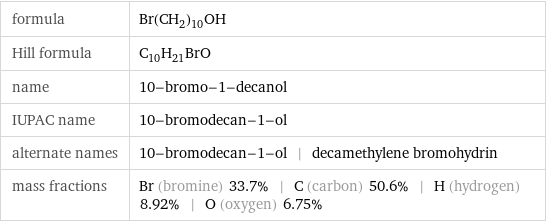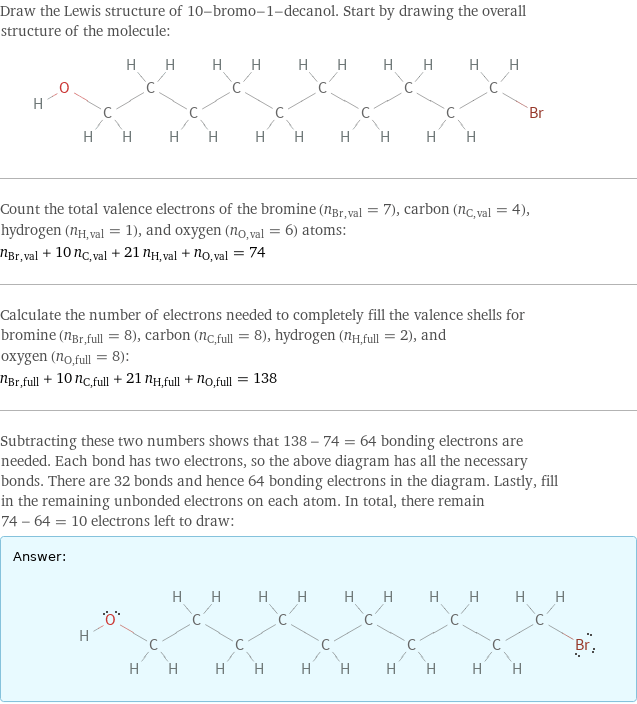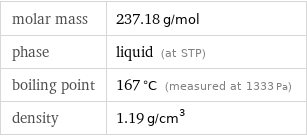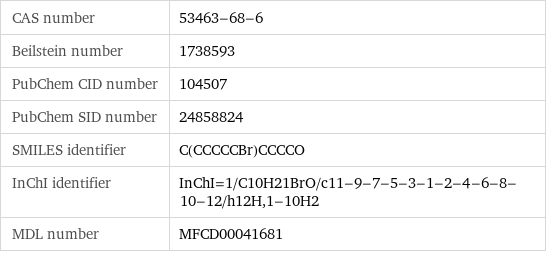Input interpretation

10-bromo-1-decanol
Chemical names and formulas

formula | Br(CH_2)_10OH Hill formula | C_10H_21BrO name | 10-bromo-1-decanol IUPAC name | 10-bromodecan-1-ol alternate names | 10-bromodecan-1-ol | decamethylene bromohydrin mass fractions | Br (bromine) 33.7% | C (carbon) 50.6% | H (hydrogen) 8.92% | O (oxygen) 6.75%
Lewis structure

Draw the Lewis structure of 10-bromo-1-decanol. Start by drawing the overall structure of the molecule: Count the total valence electrons of the bromine (n_Br, val = 7), carbon (n_C, val = 4), hydrogen (n_H, val = 1), and oxygen (n_O, val = 6) atoms: n_Br, val + 10 n_C, val + 21 n_H, val + n_O, val = 74 Calculate the number of electrons needed to completely fill the valence shells for bromine (n_Br, full = 8), carbon (n_C, full = 8), hydrogen (n_H, full = 2), and oxygen (n_O, full = 8): n_Br, full + 10 n_C, full + 21 n_H, full + n_O, full = 138 Subtracting these two numbers shows that 138 - 74 = 64 bonding electrons are needed. Each bond has two electrons, so the above diagram has all the necessary bonds. There are 32 bonds and hence 64 bonding electrons in the diagram. Lastly, fill in the remaining unbonded electrons on each atom. In total, there remain 74 - 64 = 10 electrons left to draw: Answer: | |
3D structure

3D structure
Basic properties

molar mass | 237.18 g/mol phase | liquid (at STP) boiling point | 167 °C (measured at 1333 Pa) density | 1.19 g/cm^3
Units

Liquid properties (at STP)

density | 1.19 g/cm^3 refractive index | 1.476
Units

Chemical identifiers

CAS number | 53463-68-6 Beilstein number | 1738593 PubChem CID number | 104507 PubChem SID number | 24858824 SMILES identifier | C(CCCCCBr)CCCCO InChI identifier | InChI=1/C10H21BrO/c11-9-7-5-3-1-2-4-6-8-10-12/h12H, 1-10H2 MDL number | MFCD00041681
Safety properties

flash point | 110 °C